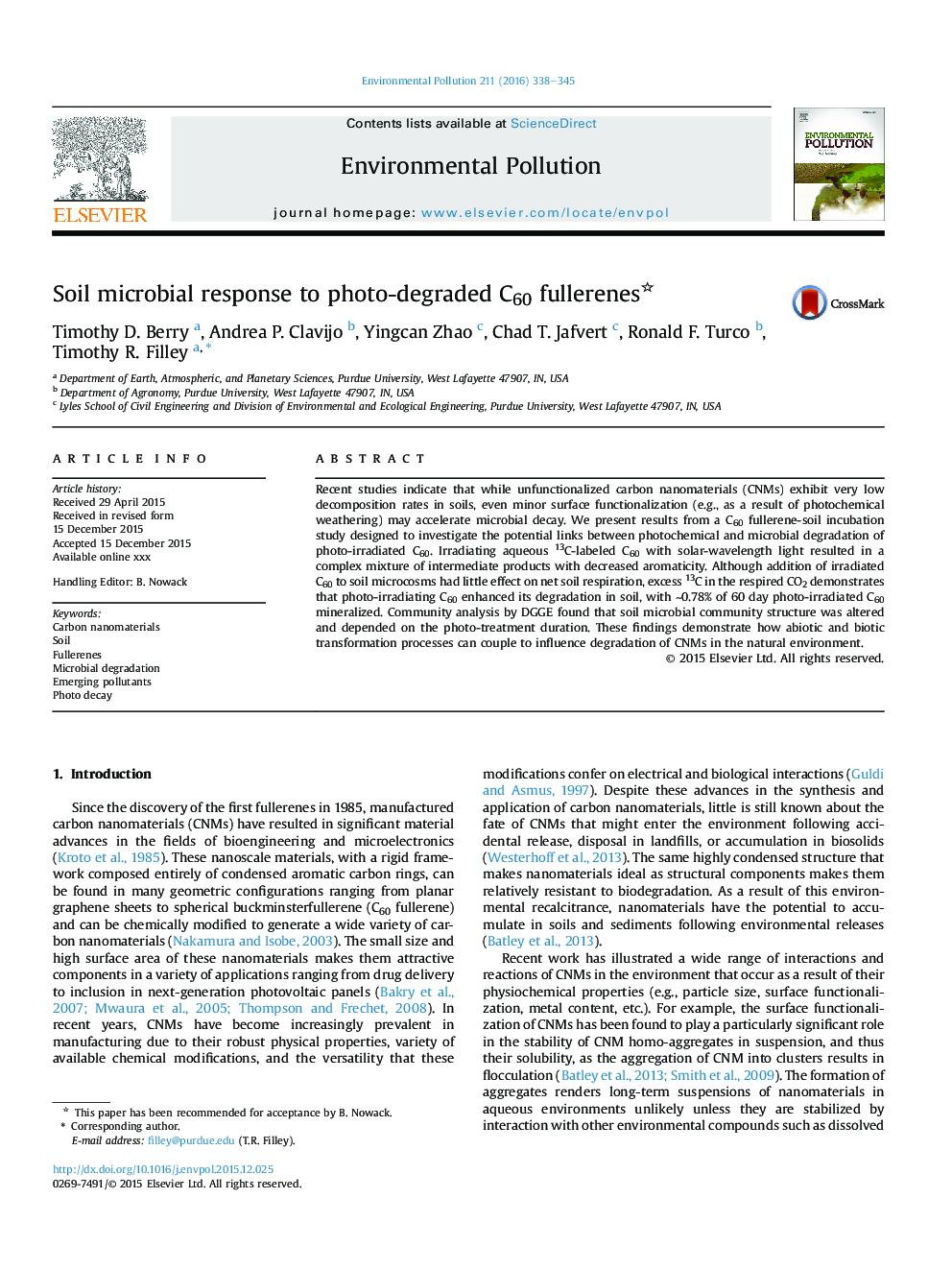| Article ID | Journal | Published Year | Pages | File Type |
|---|---|---|---|---|
| 6315537 | Environmental Pollution | 2016 | 8 Pages |
Abstract
Recent studies indicate that while unfunctionalized carbon nanomaterials (CNMs) exhibit very low decomposition rates in soils, even minor surface functionalization (e.g., as a result of photochemical weathering) may accelerate microbial decay. We present results from a C60 fullerene-soil incubation study designed to investigate the potential links between photochemical and microbial degradation of photo-irradiated C60. Irradiating aqueous 13C-labeled C60 with solar-wavelength light resulted in a complex mixture of intermediate products with decreased aromaticity. Although addition of irradiated C60 to soil microcosms had little effect on net soil respiration, excess 13C in the respired CO2 demonstrates that photo-irradiating C60 enhanced its degradation in soil, with â¼0.78% of 60 day photo-irradiated C60 mineralized. Community analysis by DGGE found that soil microbial community structure was altered and depended on the photo-treatment duration. These findings demonstrate how abiotic and biotic transformation processes can couple to influence degradation of CNMs in the natural environment.
Related Topics
Life Sciences
Environmental Science
Environmental Chemistry
Authors
Timothy D. Berry, Andrea P. Clavijo, Yingcan Zhao, Chad T. Jafvert, Ronald F. Turco, Timothy R. Filley,
